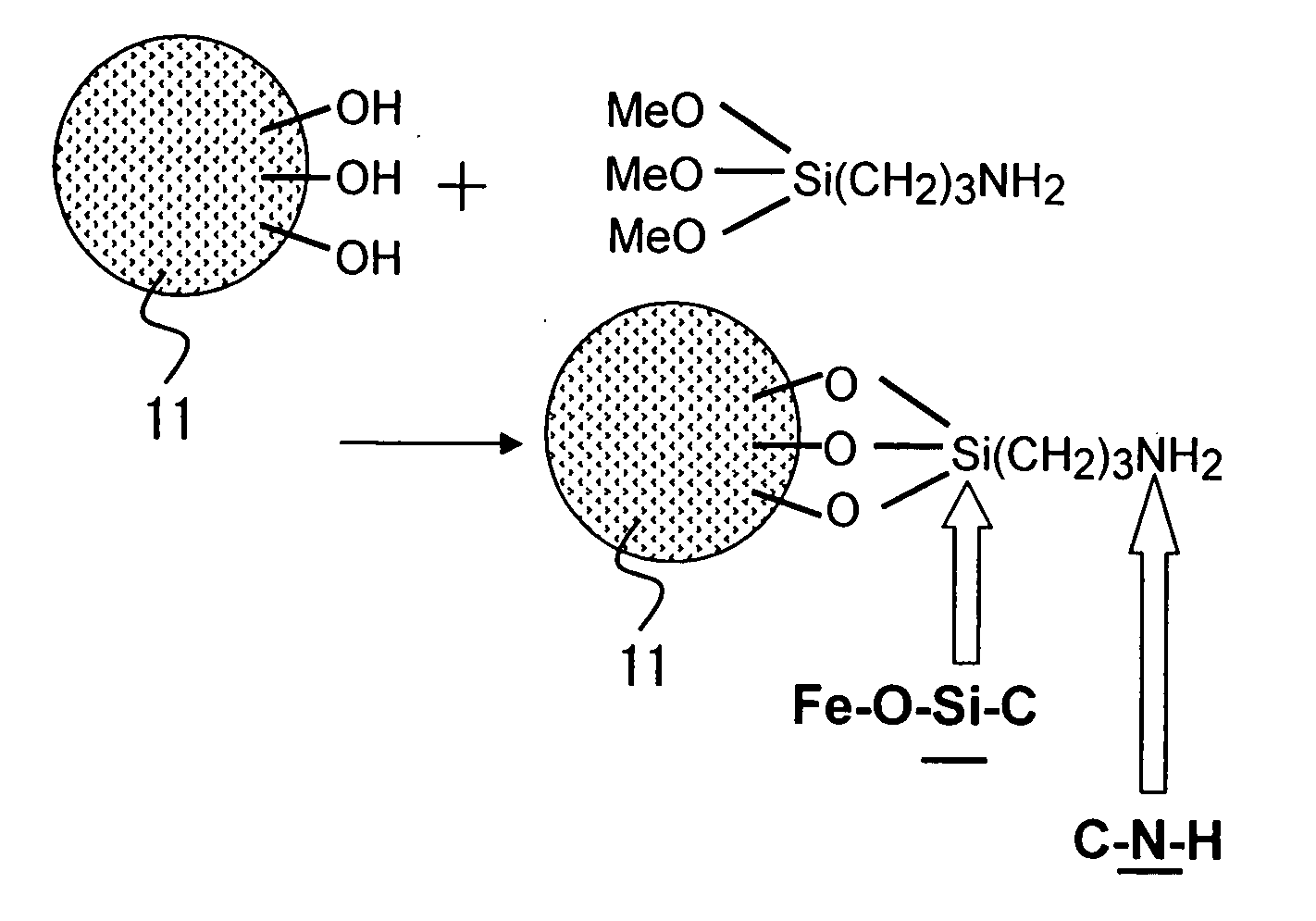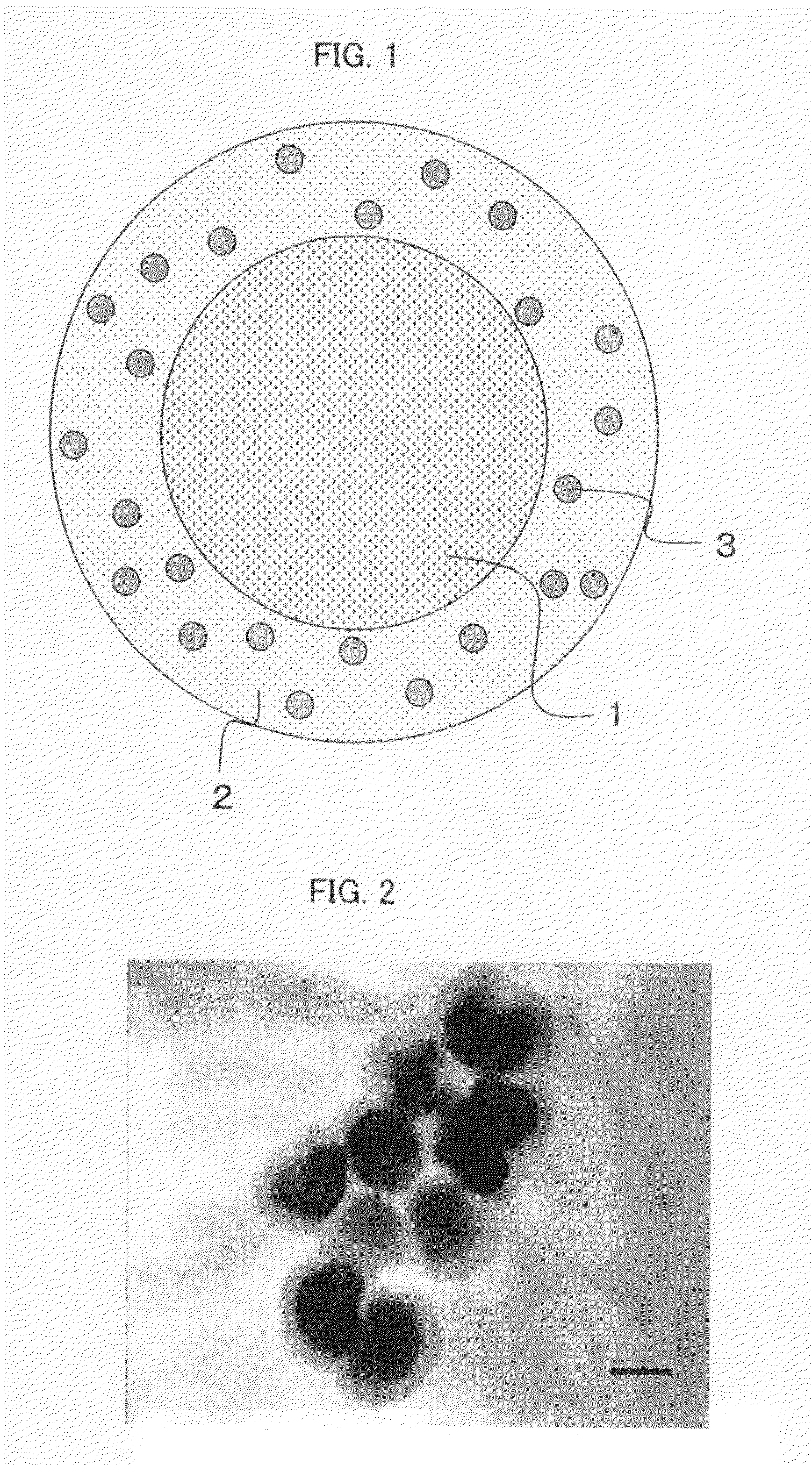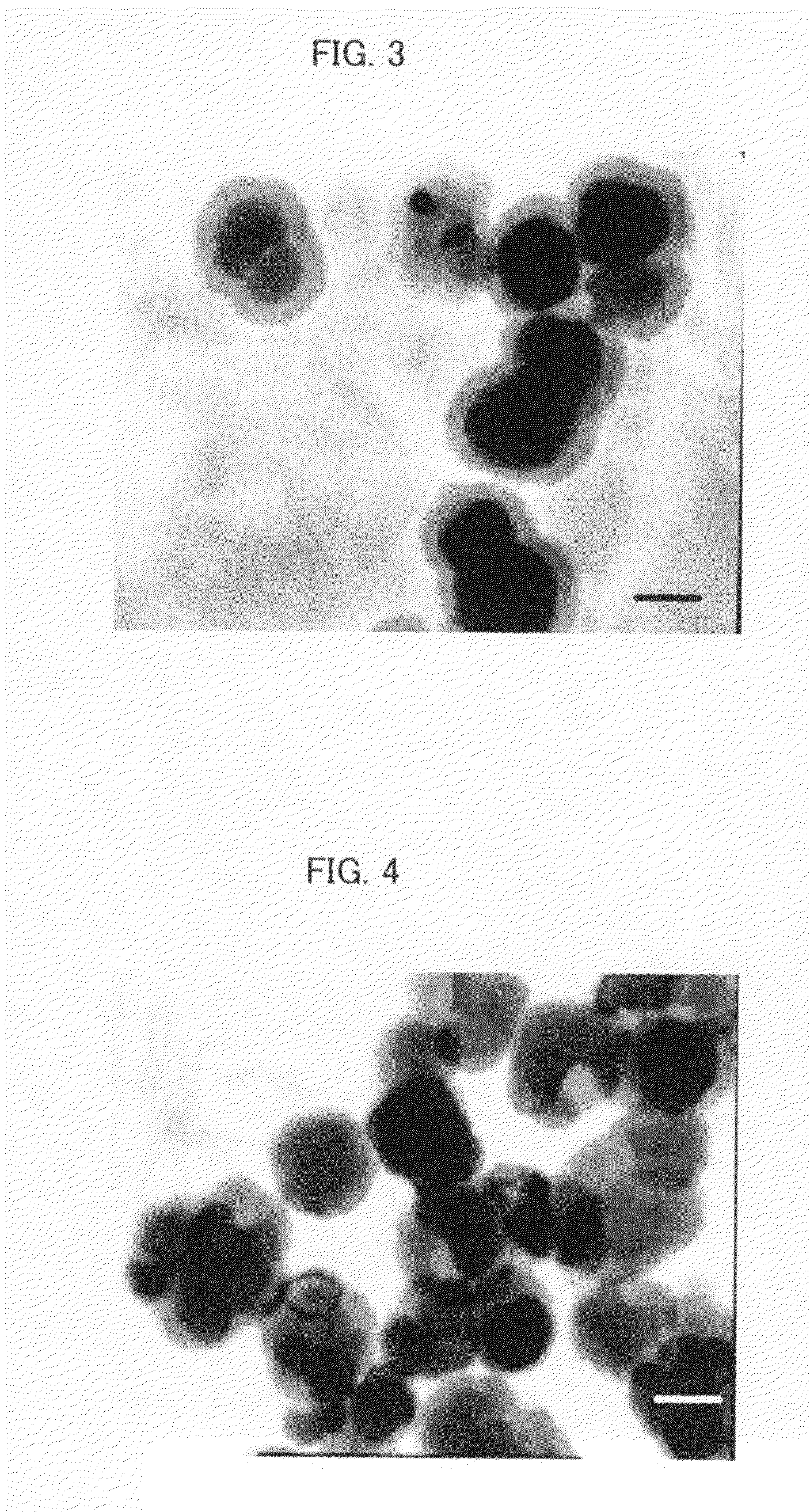Composite Particulate and Manufacturing Method for the Same
a technology of composite parts and manufacturing methods, applied in the field of composite parts, can solve the problems of instability of human body, cancer cell thermal resistance, and associated liposome formed by a phospholipid molecule,
- Summary
- Abstract
- Description
- Claims
- Application Information
AI Technical Summary
Benefits of technology
Problems solved by technology
Method used
Image
Examples
embodiment 1
of the Present Invention
[0080]First, 0.5 g of commercially available magnetic particles (average diameter: 150 nm) was dispersed in a mixed solvent of 12.5 ml acetic acid and 12.5 ml ethanol. Then, 3-aminopropyl trimethyl methoxysilane 0.5 ml was added to it and they were agitated for 18 hours at room temperature. Then, it was thoroughly cleansed with ethanol and dried.
[0081]Meanwhile a temperature-responsive polymer was prepared. Here, 11.25 g of 2-carboxyisopropyl acrylamide and 8.24 g of hydroxysuccinimide were dissolved in a mixed solvent of dioxane 120 ml and ethyl acetate 100 ml. 16.25 g of dicyclohexyl carbodiimide was added to this solution and allowed to react for one hour at 0° C., and then, for 15 hours at room temperature. The crystals thus obtained was dissolved in isopropanol and kept it for 24 hours at 4° C. Then, the deposited crystal was filtrated, and the residual was condensed in an evaporator and dried to obtain 2-carboxyisopropylacrylamide succin-imide ester.
[00...
reference example 1
[0086]When a magnetic particulate is reacted with 3-aminopropyl-trimethylmethoxysilane, the following treatment may be conducted. That is, a commercially available magnetic particulate (average diameter: 150 nm) 0.5 g is dispersed in the solvents described in Table 2 below. Then, 3-aminopropyltrimethyl-methoxysilane 0.5 ml is added and agitated for 18 hours at room temperature or at 80° C. After that, it was thoroughly cleansed with ethanol, and allowed to dry.
TABLE 2AmountAmountofofReferenceSolventSolventExampleSolvent 11 (ml)Solvent 21 (ml)Temperature1acetic25nonenoneroomacidtemperature2ethanol24water1roomtemperature3ethanol24water180° C.4toluen25nonenoneroomtemperature
[0087]As will be described below, a magnetic particulate may be reacted with 3-aminopropyl-trimethylmethoxysilane after vitrification treatment of the magnetic particulate. That is, the commercially available magnetic particulate (average diameter: 150 nm) 0.2 g is dispersed in an aqueous solution containing hydroge...
embodiment 2
of the Present Invention
[0089]In the present embodiment, introduction of an amino group to the surface of the particulate by silane coupling treatment was first conducted. In this introduction, first, 2 g of magnetite particulate 11 was dispersed in 400 ml of solvent, which was then subjected to ultrasonic treatment for 30 minutes. A mixed solution of acetic acid and ethanol at a ratio of 1:1 by volume was used as the solvent. Then, as shown in FIG. 5, 10 ml of 3-aminopropyl-trimethylmethoxysilane was added to this solvent as a silane coupling reagent, and allowed to react for 24 hours at room temperature. After that, it was cleansed 5 times with distilled water. Then, it was substituted with ethanol. After drying it for 24 hour under a reduced pressure, the particulate was recovered. Note that the hydroxyl group attached to the magnetite particulate 11 in FIG. 5 is a portion of iron hydroxide.
[0090]The introduction of the silane coupling reagent was evaluated using an X-ray photoel...
PUM
| Property | Measurement | Unit |
|---|---|---|
| Frequency | aaaaa | aaaaa |
| Frequency | aaaaa | aaaaa |
| Temperature | aaaaa | aaaaa |
Abstract
Description
Claims
Application Information
 Login to View More
Login to View More - R&D
- Intellectual Property
- Life Sciences
- Materials
- Tech Scout
- Unparalleled Data Quality
- Higher Quality Content
- 60% Fewer Hallucinations
Browse by: Latest US Patents, China's latest patents, Technical Efficacy Thesaurus, Application Domain, Technology Topic, Popular Technical Reports.
© 2025 PatSnap. All rights reserved.Legal|Privacy policy|Modern Slavery Act Transparency Statement|Sitemap|About US| Contact US: help@patsnap.com



